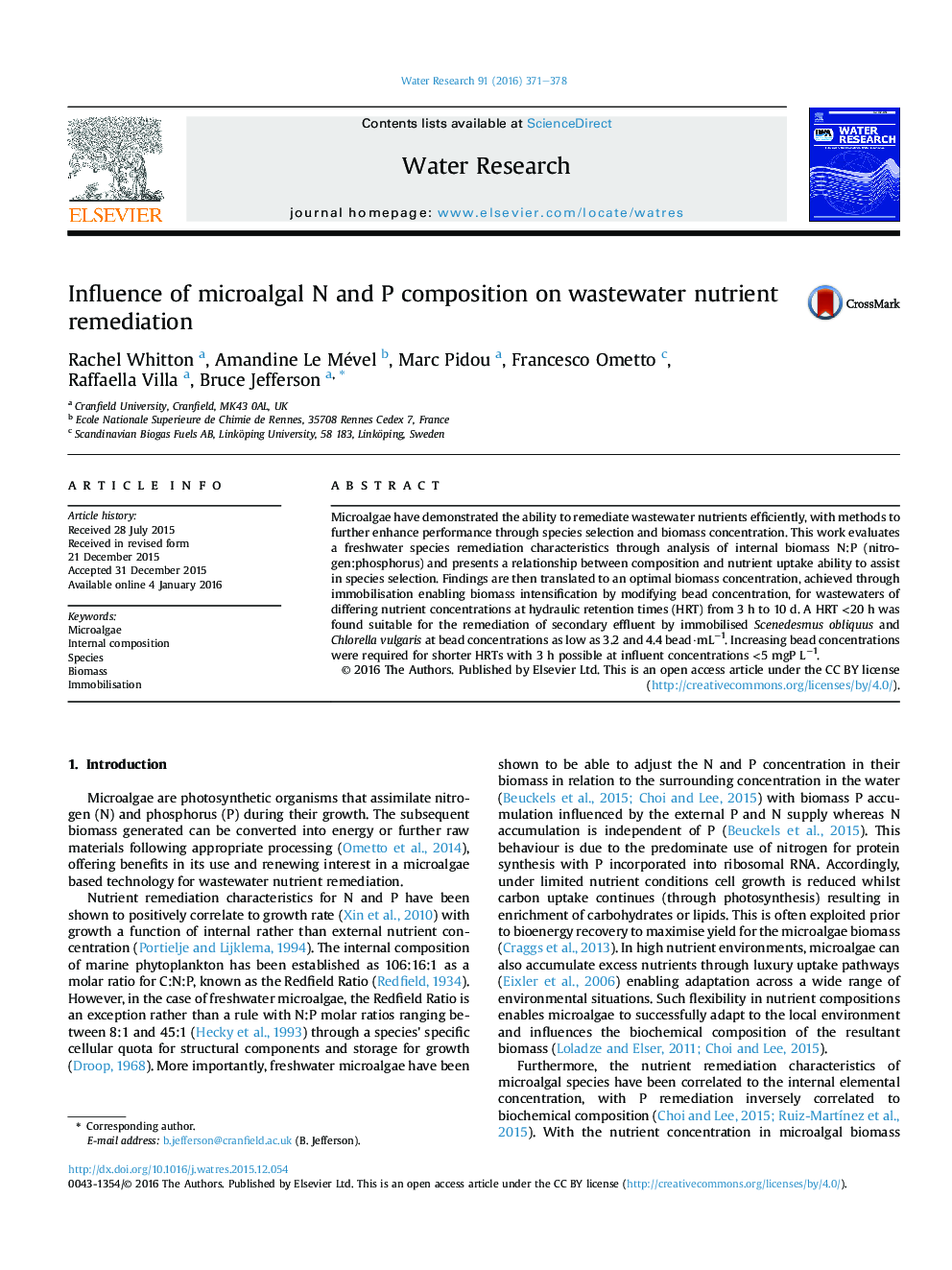| Article ID | Journal | Published Year | Pages | File Type |
|---|---|---|---|---|
| 6365190 | Water Research | 2016 | 8 Pages |
â¢Relationship between species' N:P composition and nutrient remediation evidenced.â¢Species selection can be informed through internal composition characterisation.â¢A composition of high N and low P demonstrate enhanced removal.â¢Remediation in <3 h through biomass and species selection for effluents <5 mgP Lâ1.
Microalgae have demonstrated the ability to remediate wastewater nutrients efficiently, with methods to further enhance performance through species selection and biomass concentration. This work evaluates a freshwater species remediation characteristics through analysis of internal biomass N:P (nitrogen:phosphorus) and presents a relationship between composition and nutrient uptake ability to assist in species selection. Findings are then translated to an optimal biomass concentration, achieved through immobilisation enabling biomass intensification by modifying bead concentration, for wastewaters of differing nutrient concentrations at hydraulic retention times (HRT) from 3 h to 10 d. A HRT <20 h was found suitable for the remediation of secondary effluent by immobilised Scenedesmus obliquus and Chlorella vulgaris at bead concentrations as low as 3.2 and 4.4 bead·mLâ1. Increasing bead concentrations were required for shorter HRTs with 3 h possible at influent concentrations <5 mgP Lâ1.
